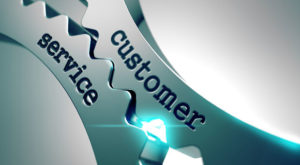Direct-to-consumer commerce, or D2C, is on the rise. Increasingly, consumers are expecting to interact directly with the companies that market and manufacture products.
“Direct-to-consumer commerce has been enhanced by the explosion of the Internet. E-commerce provides a more convenient and frictionless buying experience,” said Peter Edlund, chief solutions evangelist at DiCentral.
“The digital experience has become richer in terms of product attribute and delivery time information, as well as the delivery of said information, such as images and video,” he told the E-Commerce Times. “In addition, with customer loyalty programs, this digital experience can be tailored to match the interests of the individual shopper.”
There has been a surge of interest in D2C in recent years.
“It’s always been popular, but it’s finally getting sophisticated and much more effective,” noted Omer Artun, CEO of AgilOne.
“Consumers expect experiences that feel relevant and personalized to them, no matter if they are receiving an email, a digital ad, talking to a chatbot … but until now, technology hasn’t been there to enable marketers to deliver these experiences,” he told the E-Commerce Times.
“As the management of customer data has moved into the cloud, ownership of customer data initiatives have moved from IT to the marketing and business teams,” Artun continued.
“Machine learning has grown within the marketing technology ecosystem so that powering personalization at scale is now technically possible,” he pointed out, and “marketers are finally in the position to orchestrate and provide the experiences that customers have long been demanding.”
Direct Success
One of the keys to D2C success is maintaining a sense of relevance with consumers, “not just in outbound marketing campaigns, but also with customer experience interactions — and in digital advertising to both existing customers and prospects,” said Artun.
“Acting off a unified customer profile that has been cleansed, deduped, and stitched together into a master customer record helps ensure that these omnichannel interactions feel seamless to the consumer and are achievable by the marketer,” he explained.
“Aside from the technology, successful D2C businesses have aligned their teams behind the idea of the single customer view, and they have adjusted their teams’ KPIs and priorities around this shared initiative,” Artun continued.
“For example, retailers that have aligned store objectives with e-commerce goals drive greater overall revenue for the business, but retailers whose e-commerce team remains siloed from stores will cut into their margin, duplicate efforts, and exhaust customers with too many marketing communications that feel disjointed,” he pointed out.
Ultimately, the businesses that do best with D2C commerce are those that make full use of their own websites and apps to market to consumers, said Mike Hann, president of Poq.
“Brands are servicing unique and personalized content to their loyal customers through the likes of personalized messaging within apps,” he told the E-Commerce Times.
“Some have even created ‘stories’ features within their own apps for shoppers to feel closer to the brand,” Hann noted. “This allows them to share relevant and personalized content about products and their inspiration, and to convey the business’ values in order to make a meaningful connection.”
Increased automation capabilities and technologies also have helped to strengthen D2C commerce.
“On the supply chain side, automating the access and visibility to virtual inventory — also known as ‘dropship’ — throughout the supply chain ensures that product attributes are accurate, and inventory feeds from supply chain are timely,” said DiCentral’s Edlund.
“As automation proliferates, the need for order management for omnichannel fulfillment and inventory supply chain-related exceptions becomes more critical to meet evolving consumer expectation and demand.”
D2C 2.0
D2C commerce of the future will be shaped by a variety of new and evolving technologies.
“Organizations that succeed in direct-to-consumer strategies will continue to use technology to differentiate themselves in the digital marketplace,” said Edlund.
“For example, Ralph Lauren has announced digital product identities for millions of its products,” he noted. “By scanning the digital product ID on the product label with a smartphone, consumers can confirm whether their purchase is authentically Ralph Lauren, learn about the product attribute detail and gain access to styling tips and suggestions.”
In future iterations of D2C, consumers will have greater influence.
“We are in a pivotal moment for D2C marketing, where consumers are taking control of their data and defining how they would like to have brands engage with them,” said AgilOne’s Artun.
“In large part this is being driven by new regulations, such as GDPR and the California Consumer Privacy Act,” he noted.
“D2C brands that embrace this shift toward the empowered consumer will be the ones that thrive,” Artun predicted. “Overall, the industry is shifting toward making first-party customer data more leverageable and profitable by focusing on giving customers the experiences they want. The old-school ‘batch and blast’ approaches don’t fit within the new regulatory environment; nor do they fit with consumer’s expectations of a modern brand relationship.”
As with e-commerce in general, targeting likely will determine the success of D2C efforts.
“The future of D2C marketing will be the race to create the most personalized and cutting-edge experiences, as brands compete for customer attention and retention,” observed Raj Nijjer, VP of marketing at Yotpo.
“Shoppers’ expectations will continue to rise to the point where they expect a brand to know who they are and what they want, and to tailor experiences to them on every channel they’re interacting with a brand — through ads, onsite, emails, etc.,” he told the E-Commerce Times.
“To make this happen, brands will need to get as close as possible to a unified view of the customer,” Nijjer advised, through “technology solutions that interact seamlessly with each other, a smooth omnichannel strategy, and an agile, innovation-focused mindset.”
























































